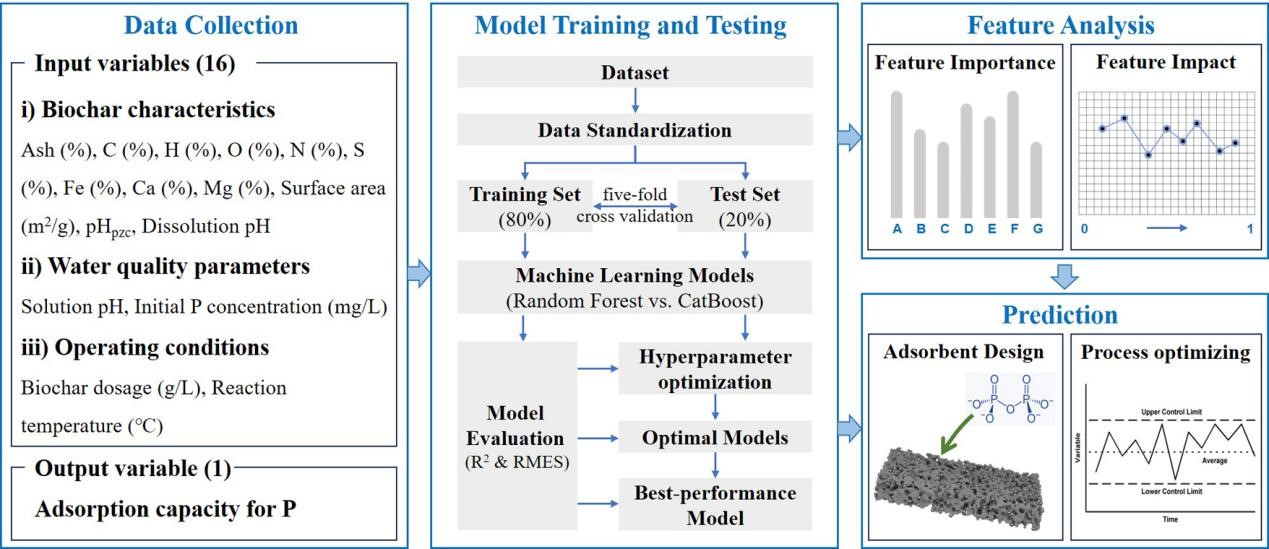Highlights
Machine Learning Drives Adsorbent Design and Process Optimization for Phosphorus Removal from Water
The excessive presence of phosphorus (P) in aquatic environments has resulted in significantly harmful environmental consequences worldwide, particularly eutrophication, and adsorption is a compelling approach for P removal.
Biochar, a carbon-rich material characterized by porous structure and abundant surface functional groups, has gained attentions as an eco-friendly option for P adsorption from aquaculture tailwater and eutrophic waters. However, the discovery and modification of the adsorbent, as well as the optimization of the adsorption process, primarily rely on a large number of repetitive experimental studies, consuming considerable research resources.
Recently, a joint research group led by Prof. DUAN Ming from the Institute of Hydrobiology (IHB) of the Chinese Academy of Sciences and coworkers from Wuhan Textile University deployed a machine learning approach to reveal the impacts of various factors and predict the performance of biochar for P removal from water. This study was published in the Journal of Environmental Management.
In this study, the researchers collected extensive data from literature published in 2011-2023, involving biochar characteristics, water quality parameters, operating conditions, and the corresponding P adsorption capacity of biochar. Ultimately, a comprehensive dataset was compiled, encompassing 190 types of biochars with over 1200 sets of experimental data.
Subsequently, the researchers employed two tree-based integrated regression models, the random forest (RF) and the CatBoost, to analyze and predict the P adsorption capacity of biochar. Key hyperparameters of both algorithms were meticulously tunned, and the optimized CatBoost model exhibited an impressive performance with an coefficient of determination(R2)value of 0.9573 and an Root Mean Square Error(RMSE)value of 8.02. The biochar dosage, initial P concentration in water, and Carbon(C) content in biochar were identified as the predominant factors. Furthermore, the researchers examined the impact of individual variables and interactions between two features using partial dependence analysis.
This work presented a comprehensive framework for applying a machine learning approach to address environmental issues and provided valuable guidance for biochar design and enhancement of P removal in polluted waters.

Schematic illustration of the presented study (Image by IHB)
(Editor: MA Yun)